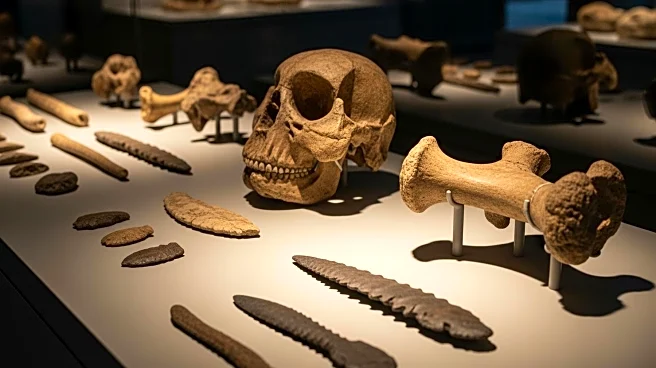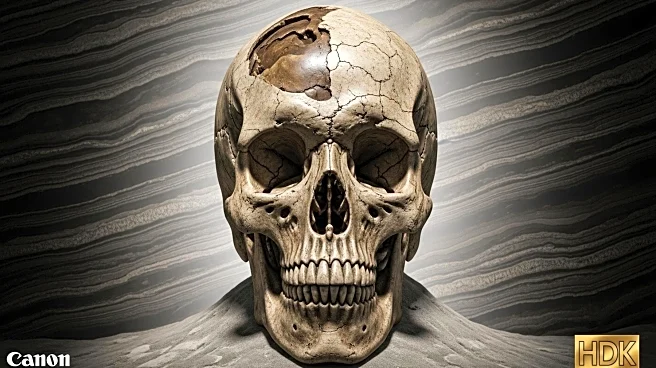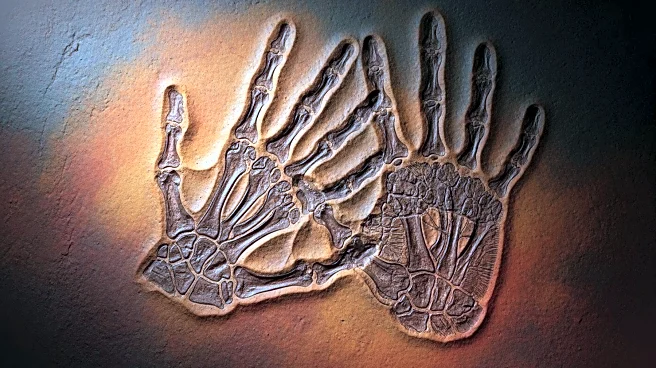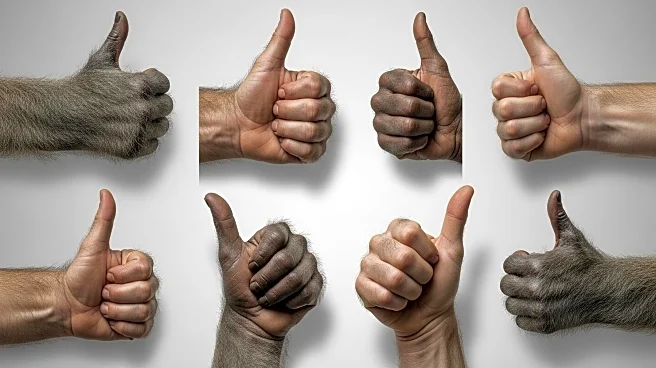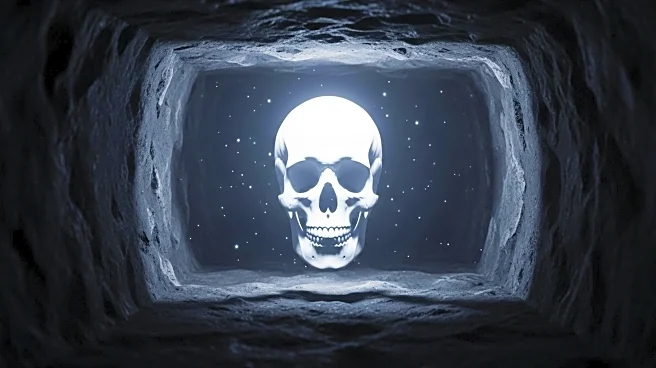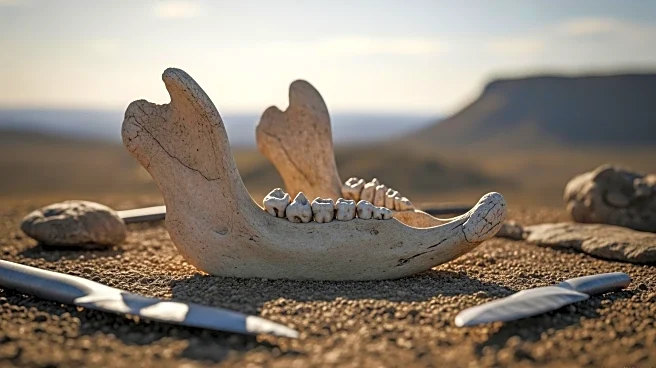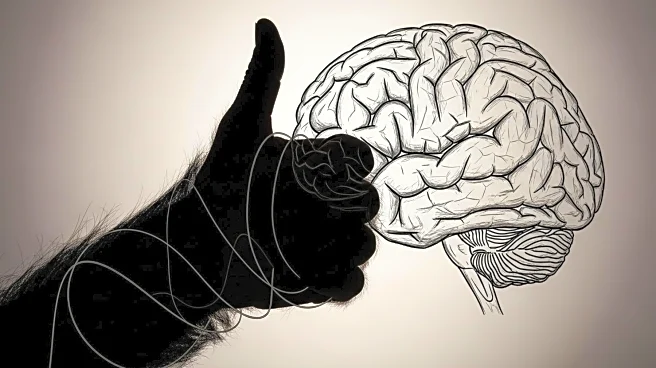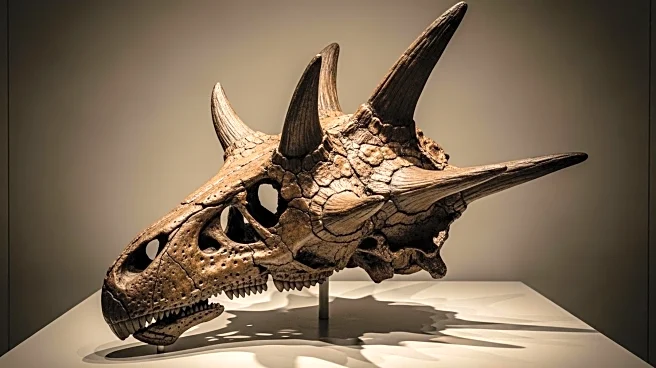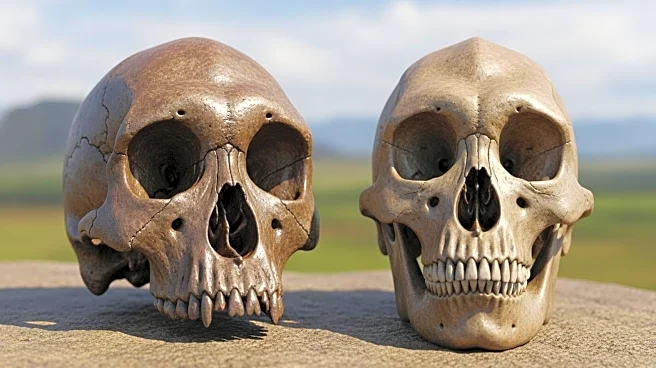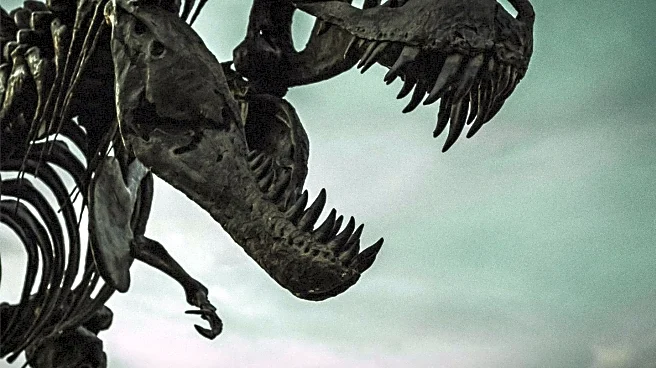What is the story about?
What's Happening?
A team led by UNLV anthropologist Brian Villmoare has uncovered new fossils at the Ledi-Geraru site in Ethiopia, revealing a more complex picture of human evolution. The fossils, which include 13 teeth, suggest that Australopithecus and the oldest specimens of Homo coexisted between 2.6 and 2.8 million years ago. This discovery challenges the traditional view of human evolution as a linear progression, instead suggesting a tree-like pattern with multiple branches. The new species of Australopithecus identified is distinct from the well-known Australopithecus afarensis, famously represented by 'Lucy'. The findings emphasize the need for further fossil discoveries to understand the differences between Australopithecus and Homo.
Why It's Important?
This discovery has significant implications for the understanding of human evolution. It suggests that human evolution involved branching into different niches rather than a straightforward progression. This challenges previous assumptions and highlights the complexity of evolutionary processes. The coexistence of Australopithecus and Homo in the same location suggests that multiple evolutionary experiments occurred as the climate changed in East Africa. This could lead to a reevaluation of how humans adapted to environmental changes and the factors that led to the extinction of more ape-like ancestors.
What's Next?
Further research and fossil discoveries are needed to fully understand the implications of this finding. Scientists aim to uncover more fossils to differentiate between Australopithecus and Homo and explore how these species overlapped in the fossil record. The research team continues to work at the Ledi-Geraru site, with hopes of finding additional evidence to support their findings and potentially naming the new species of Australopithecus.
Beyond the Headlines
The discovery raises questions about the adaptability and resilience of early human ancestors in response to environmental changes. It also highlights the importance of interdisciplinary collaboration in uncovering the complexities of human evolution. The findings may influence future research directions in anthropology and paleontology, encouraging a broader exploration of evolutionary patterns across different species.
AI Generated Content
Do you find this article useful?
